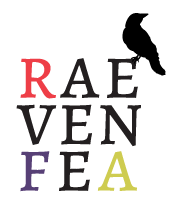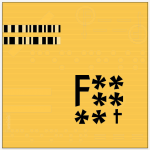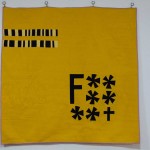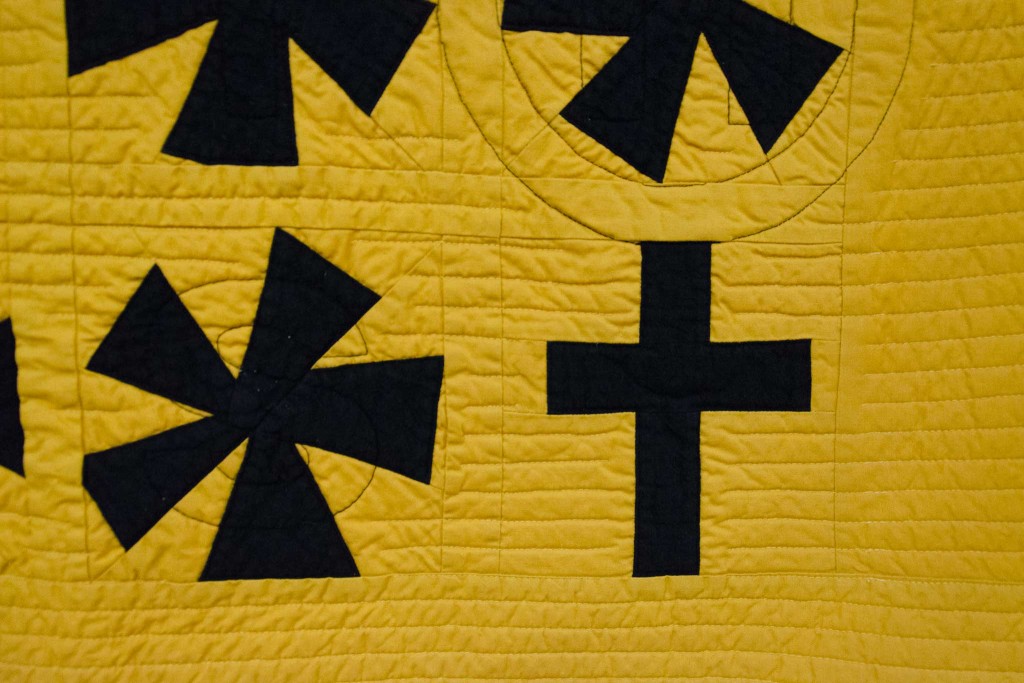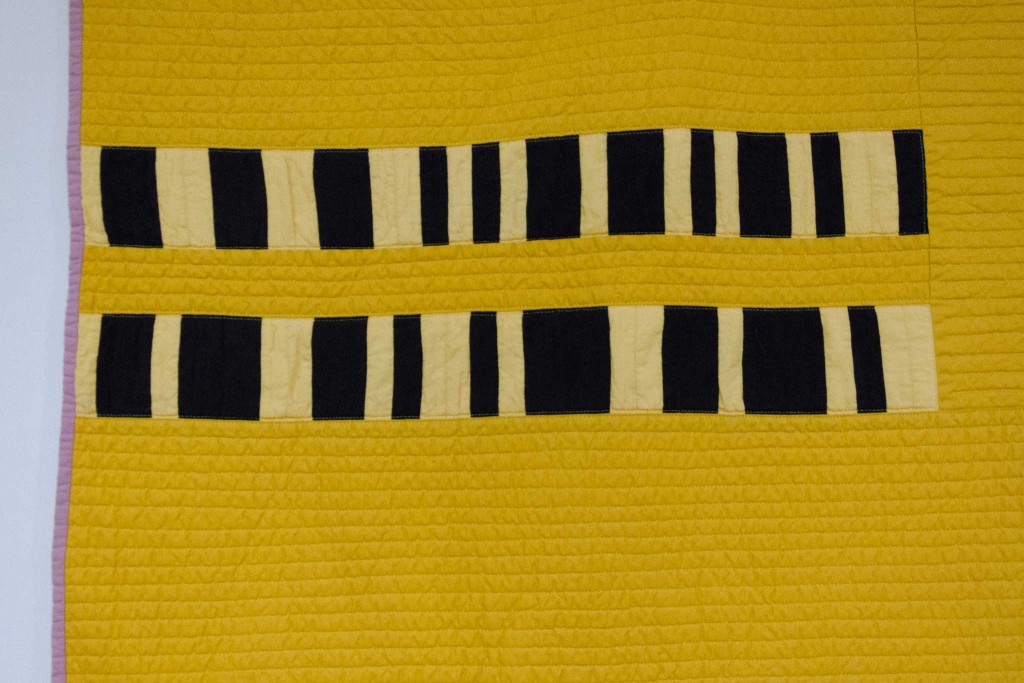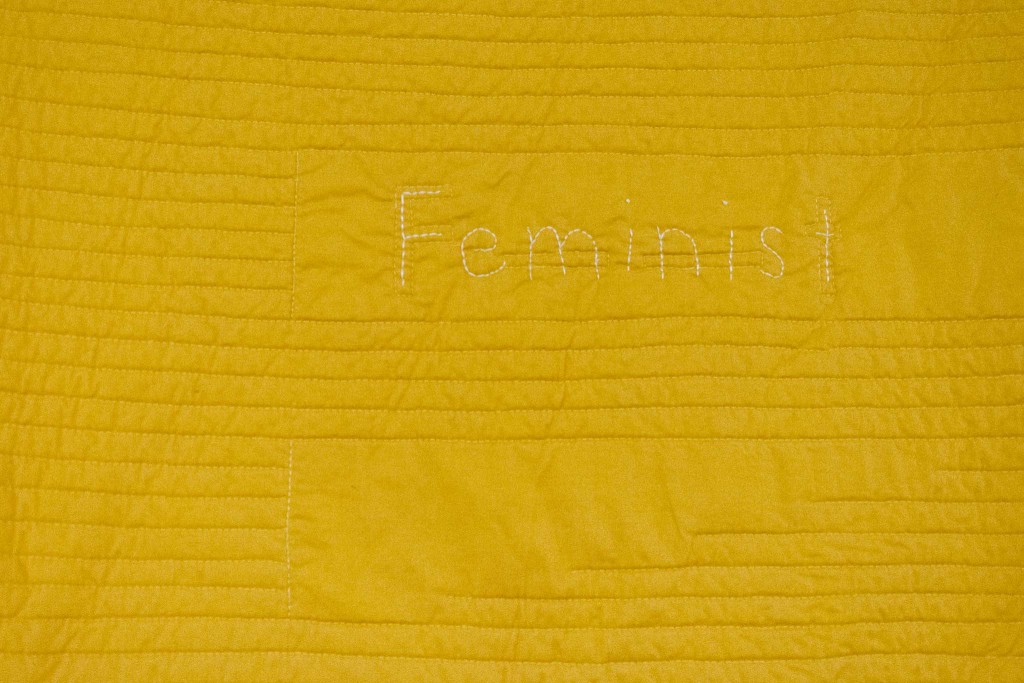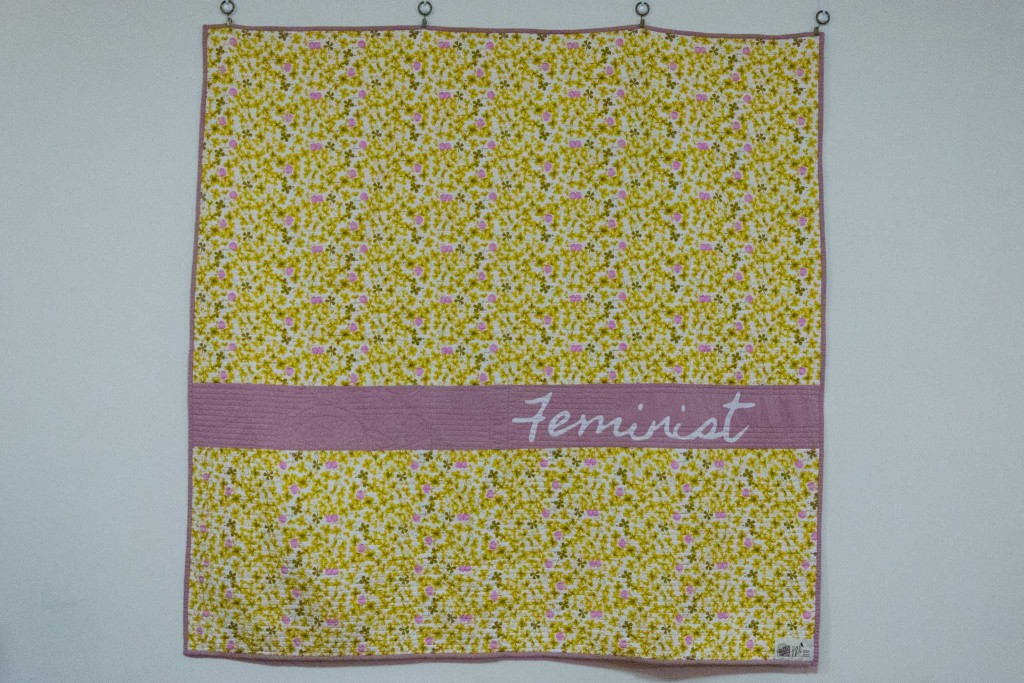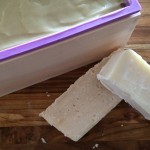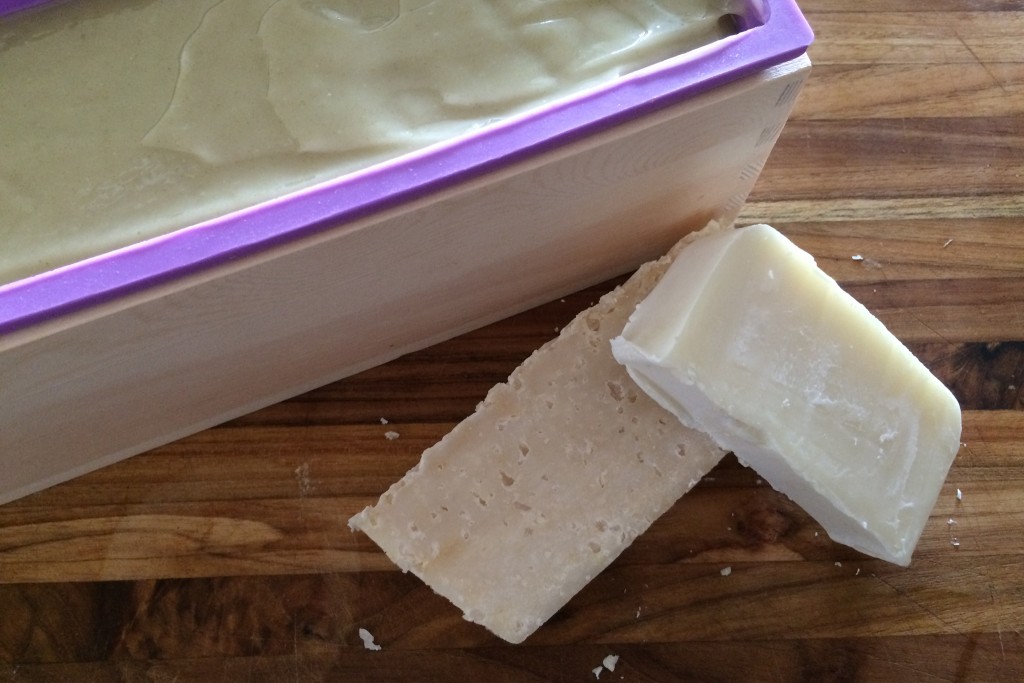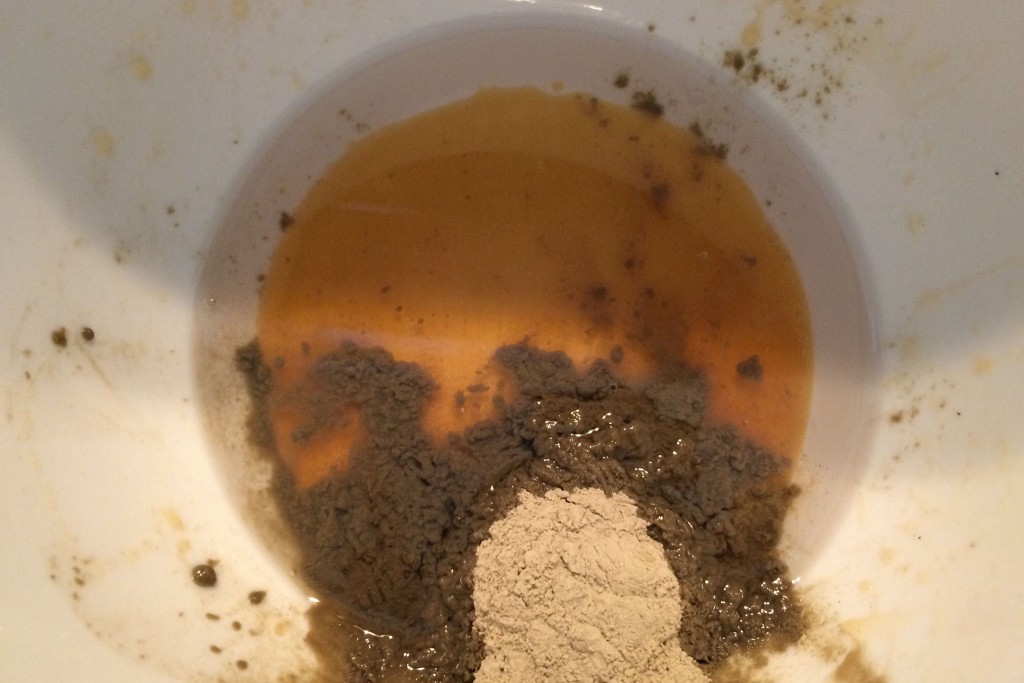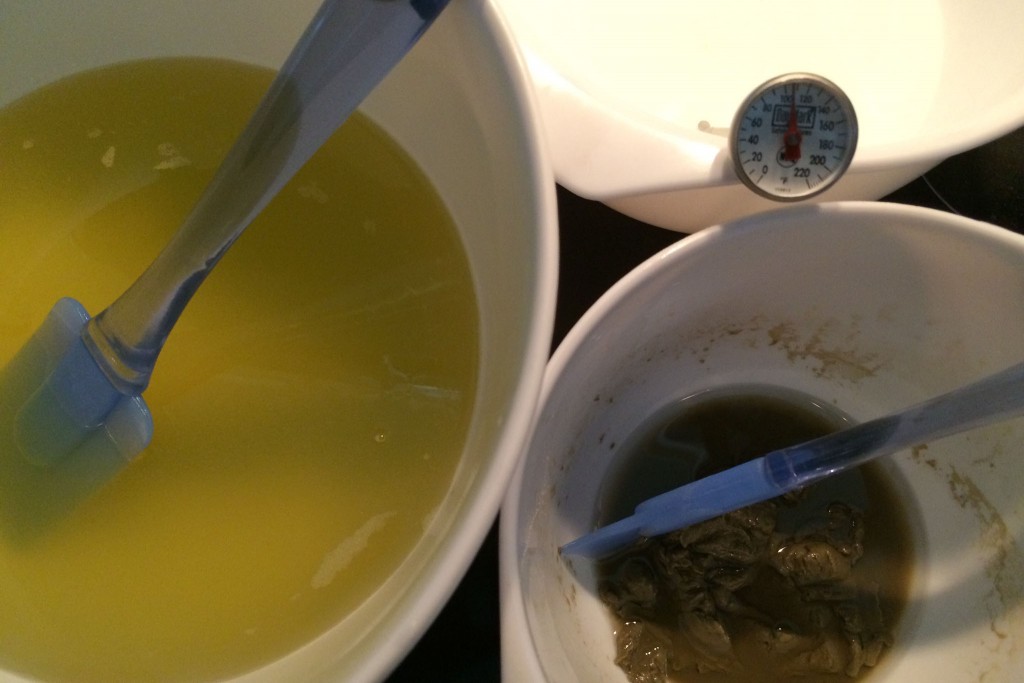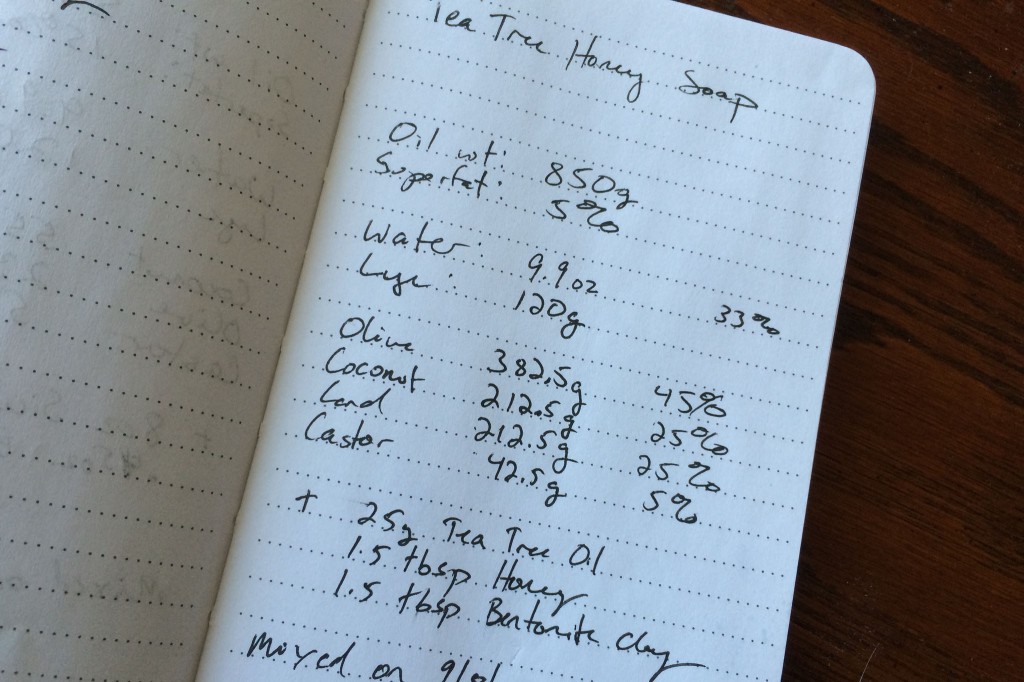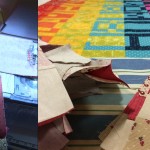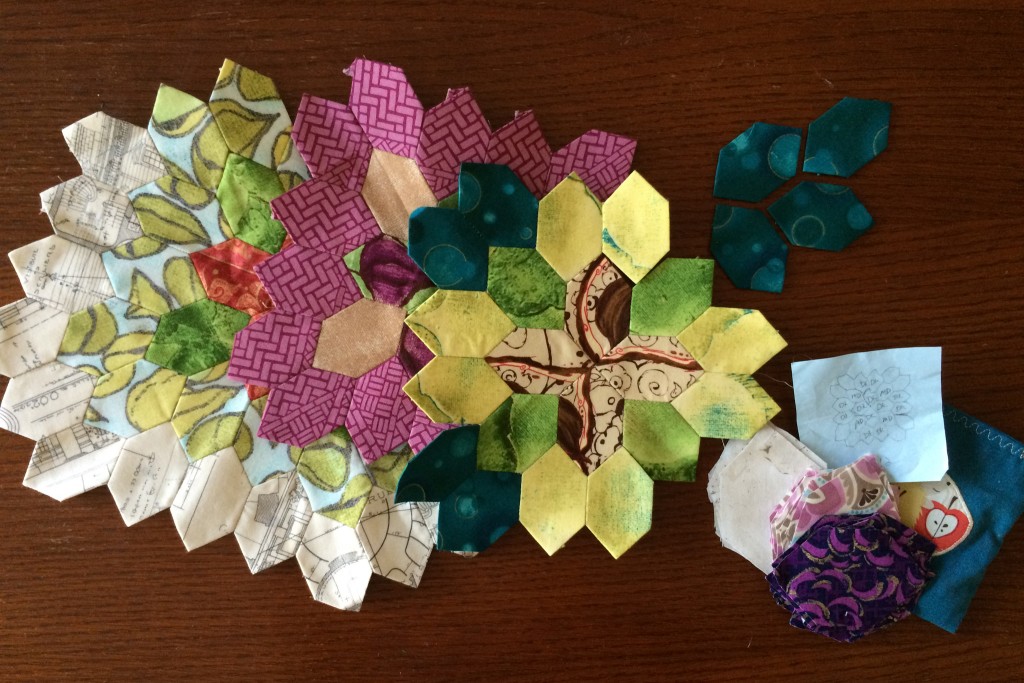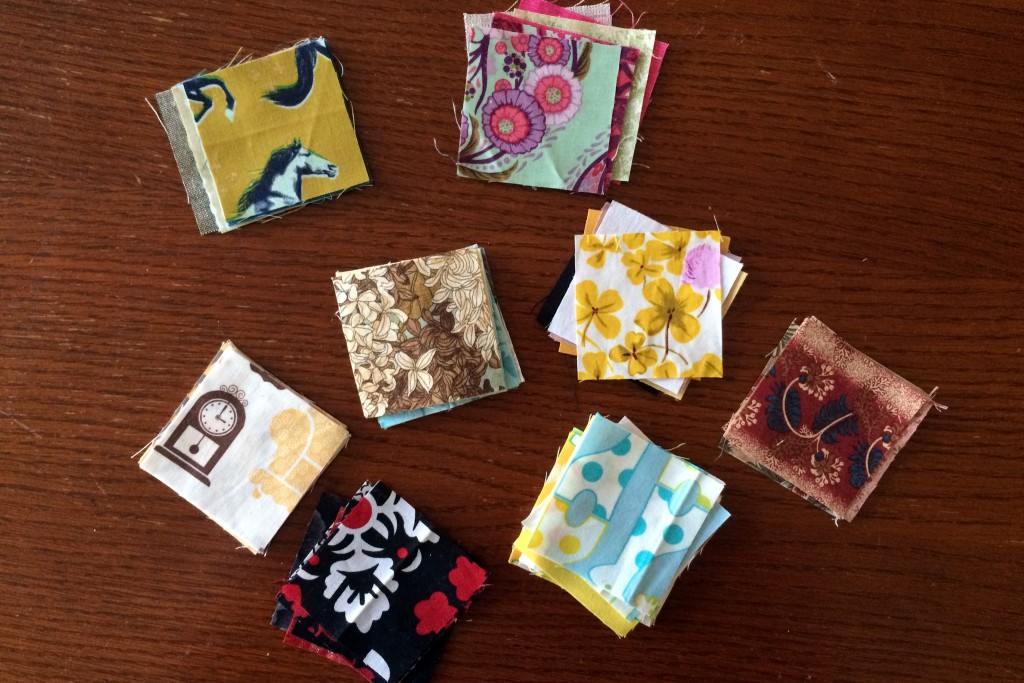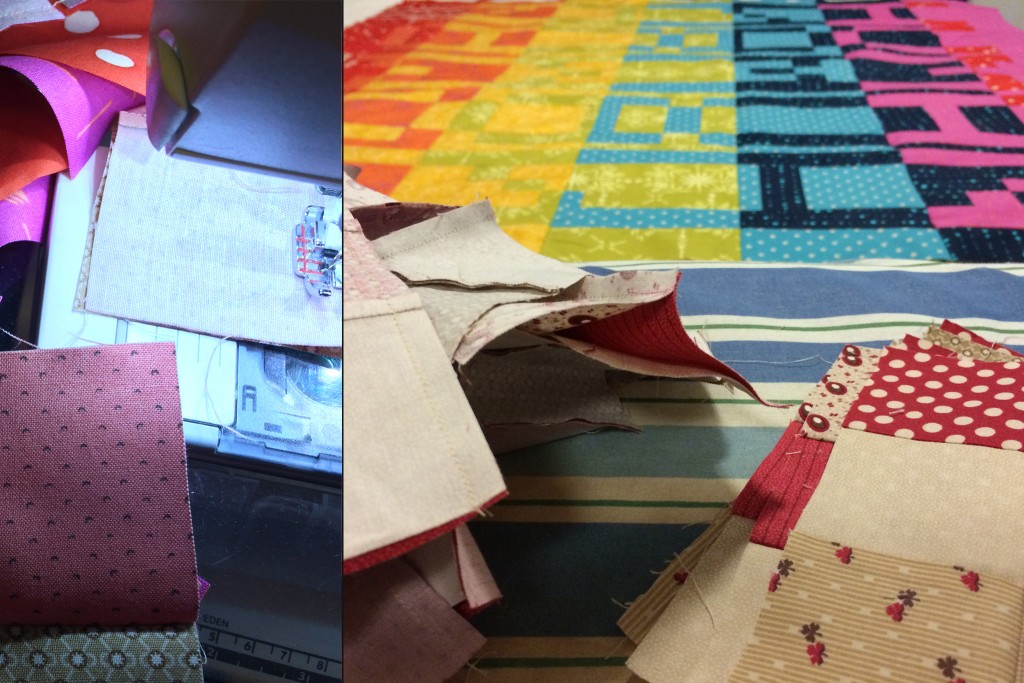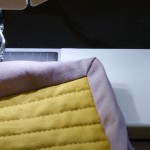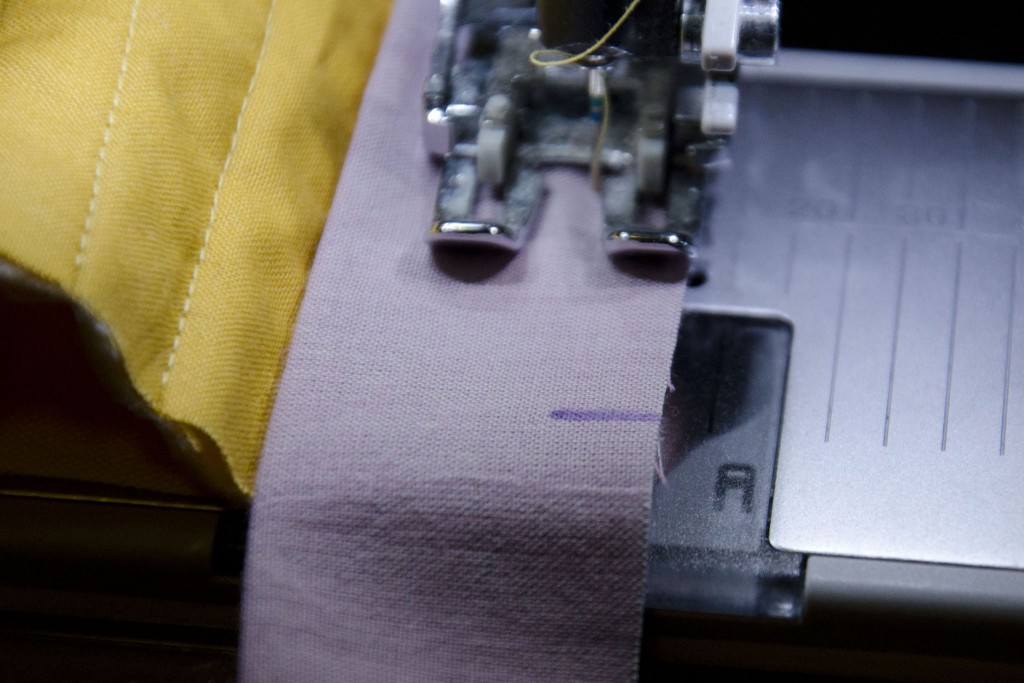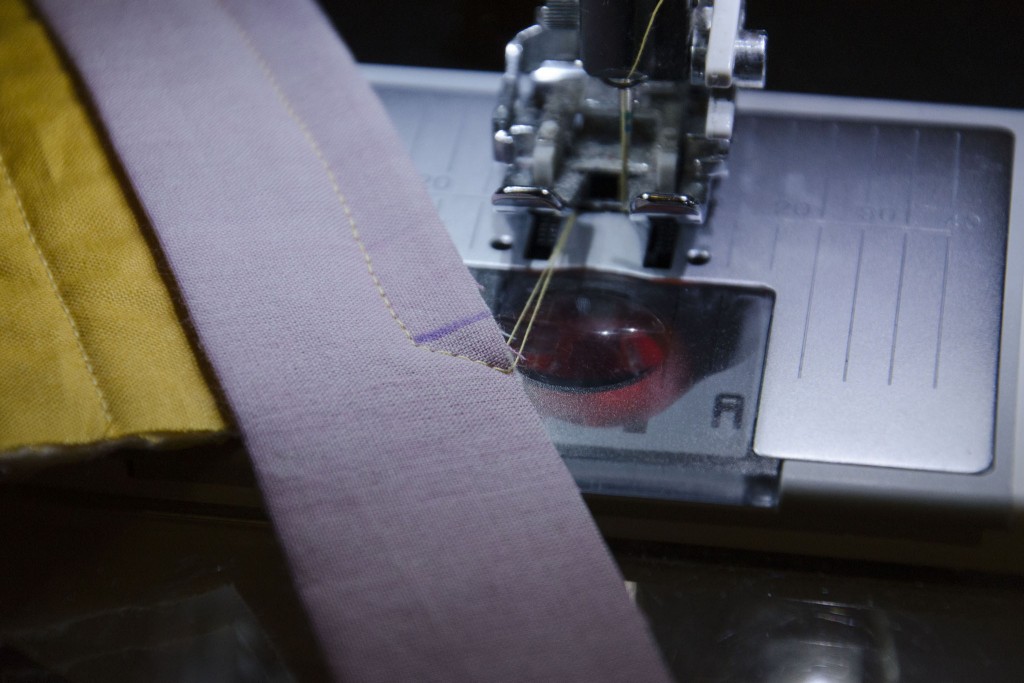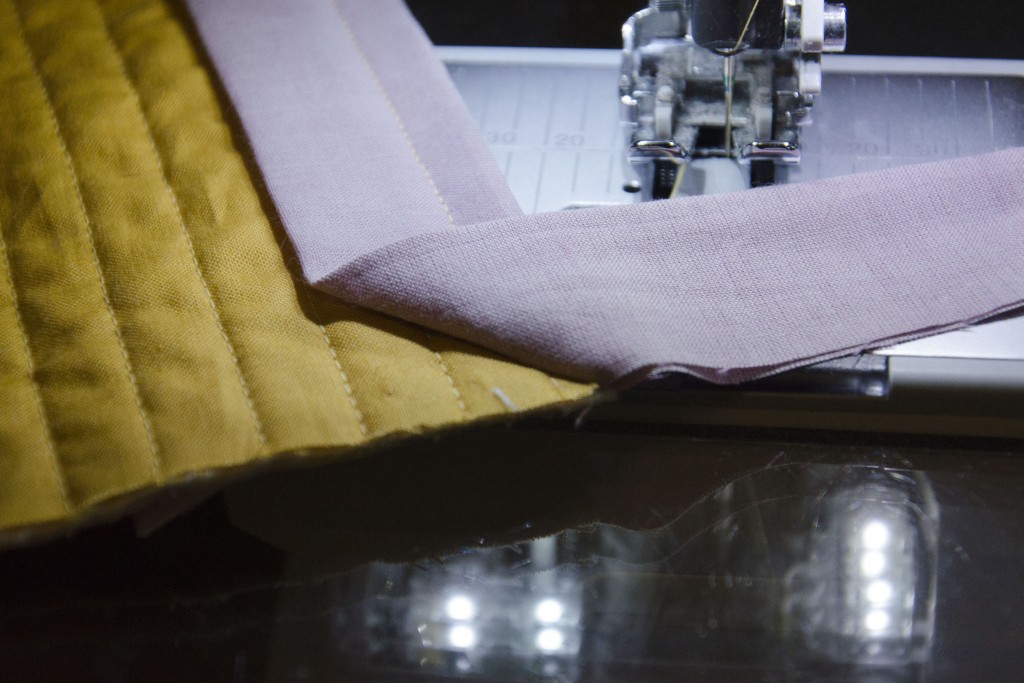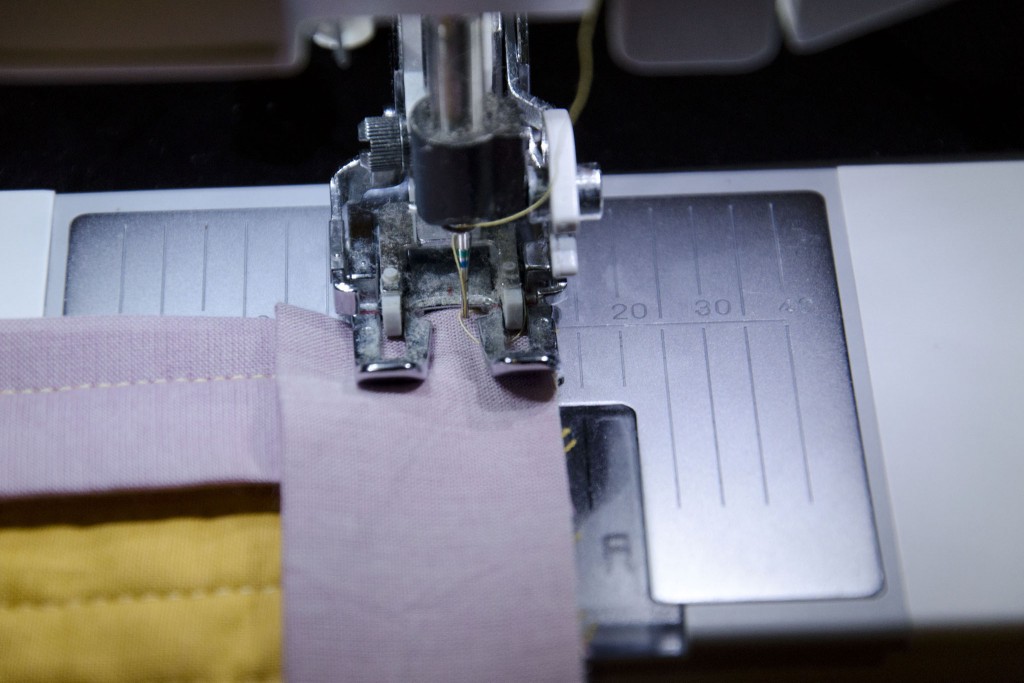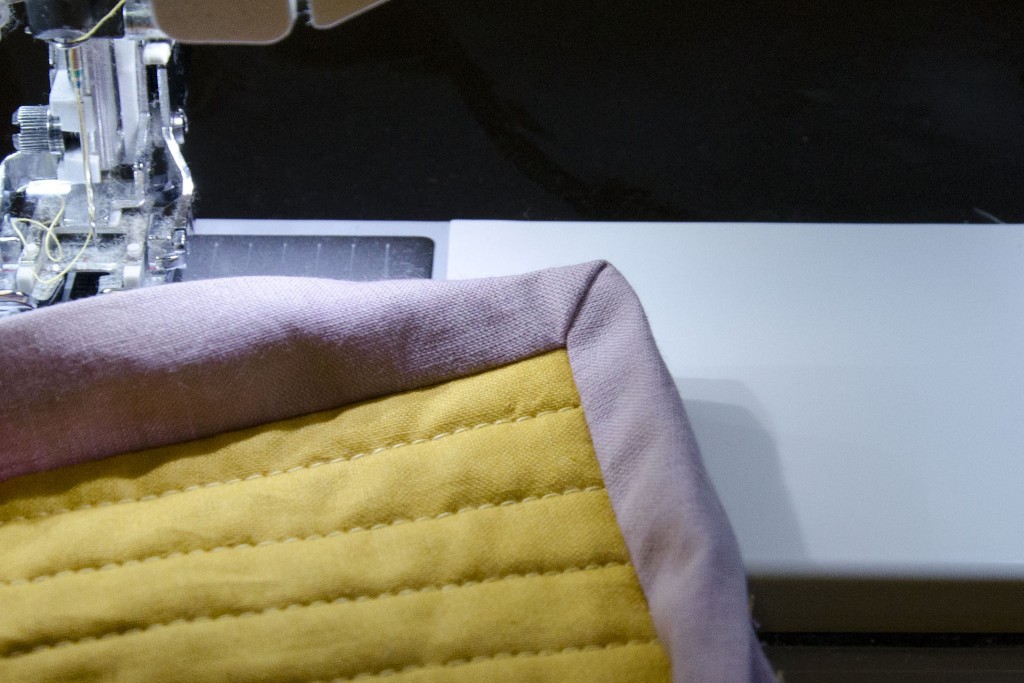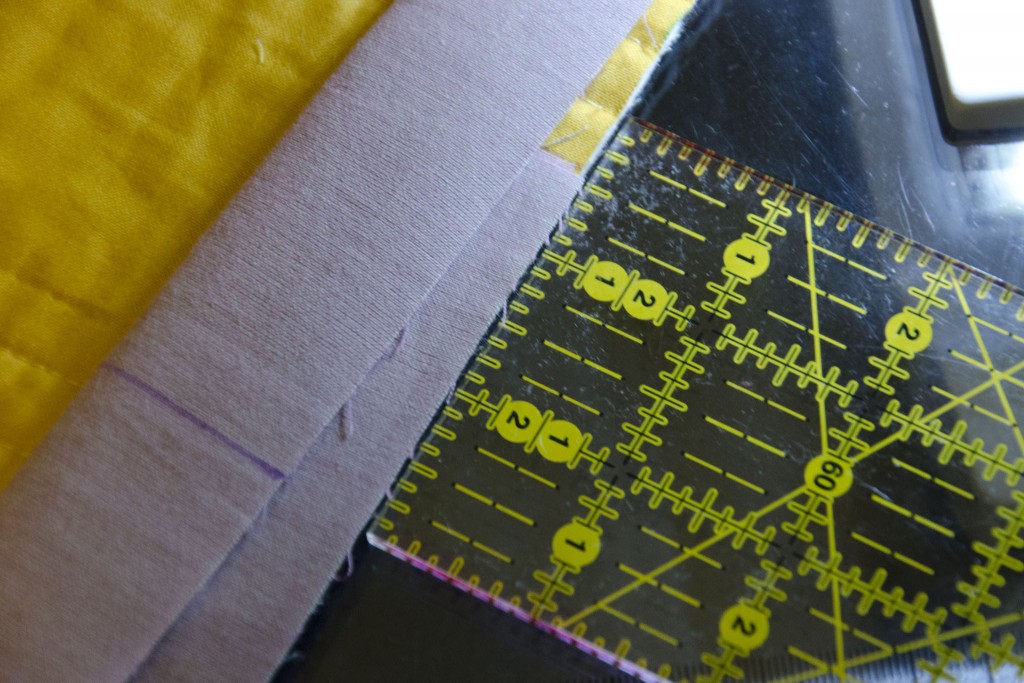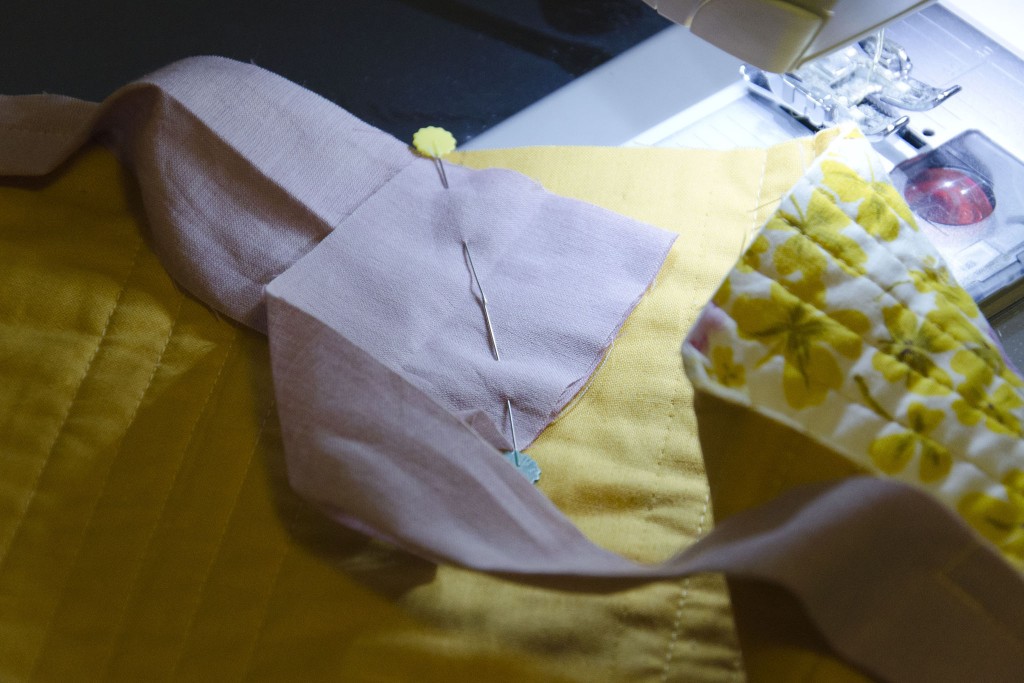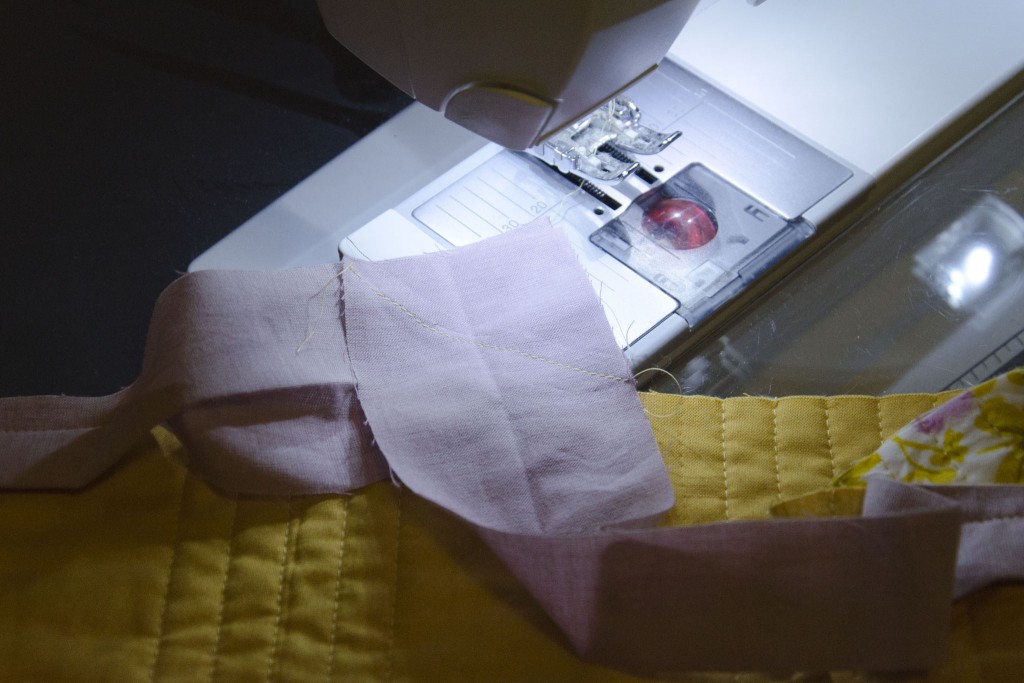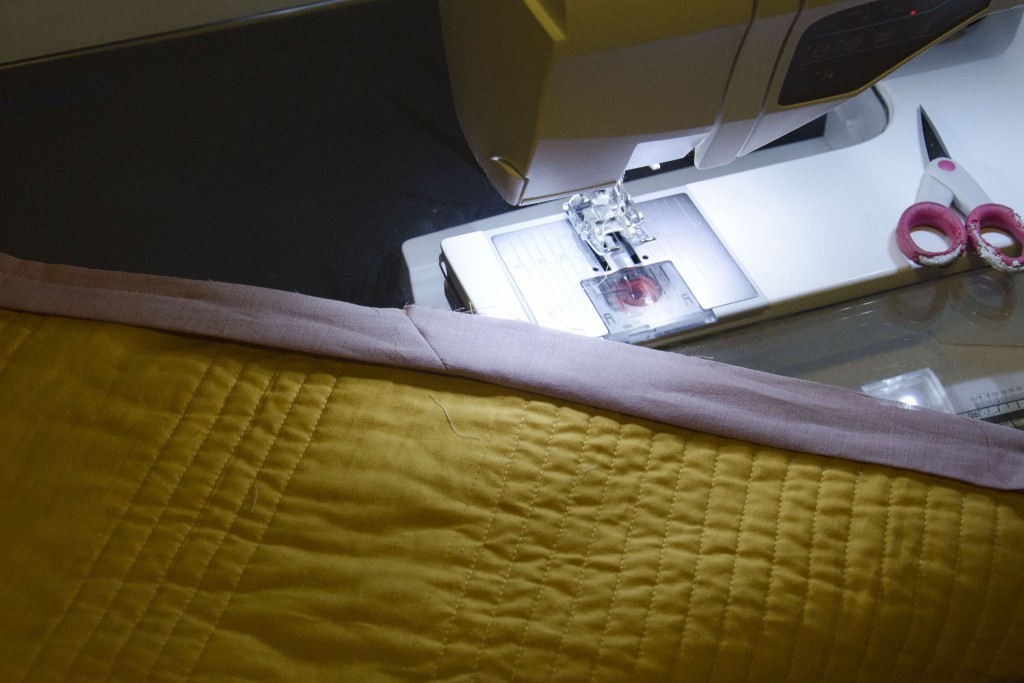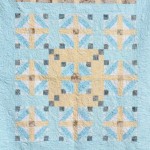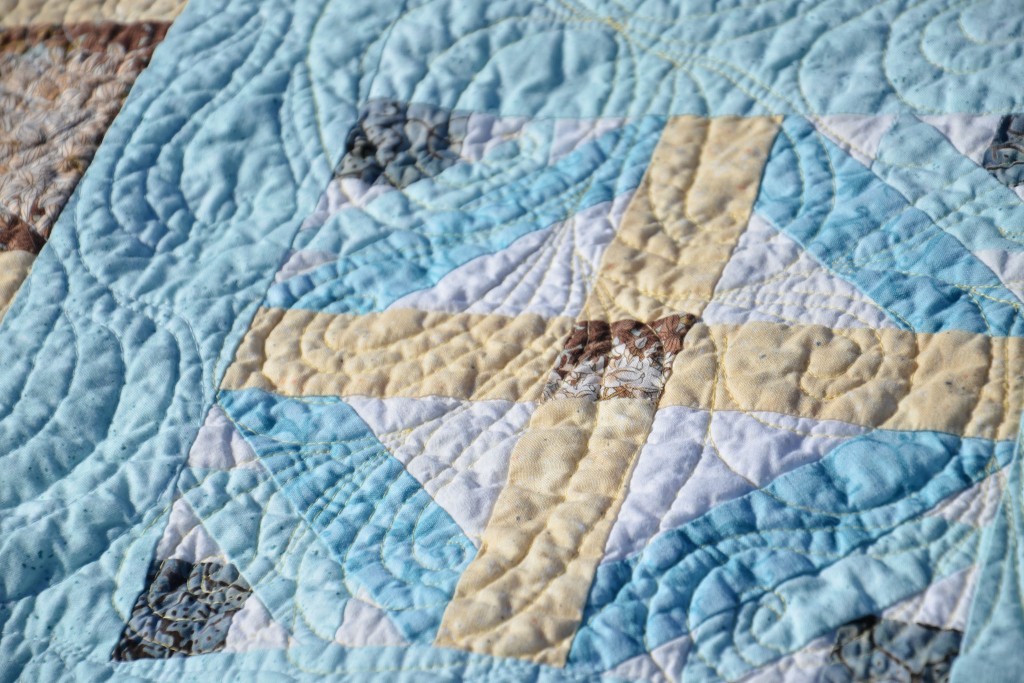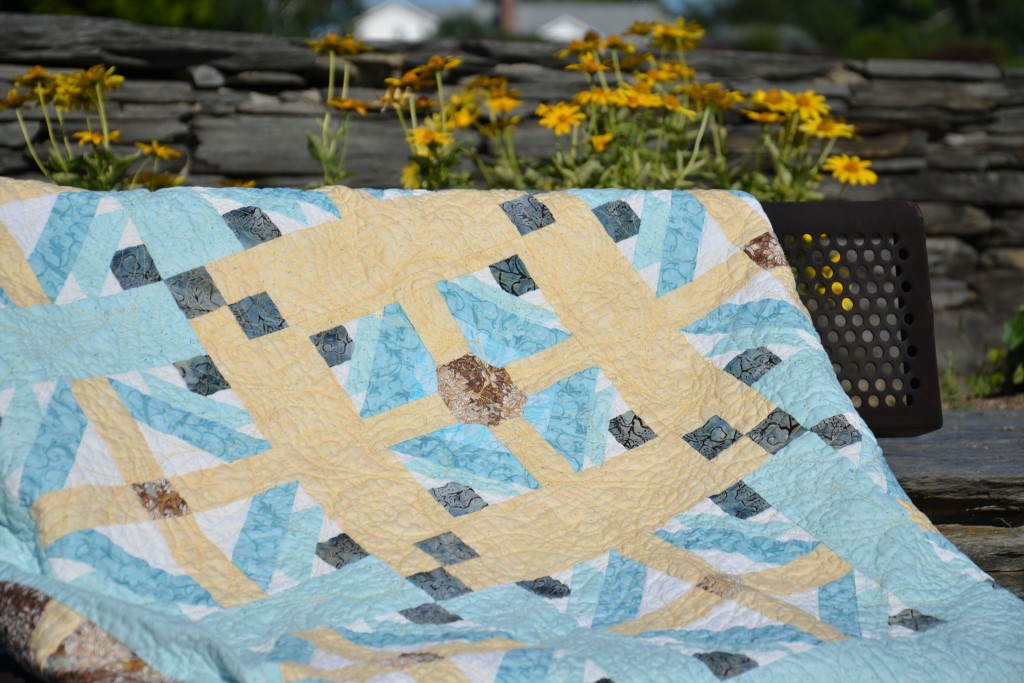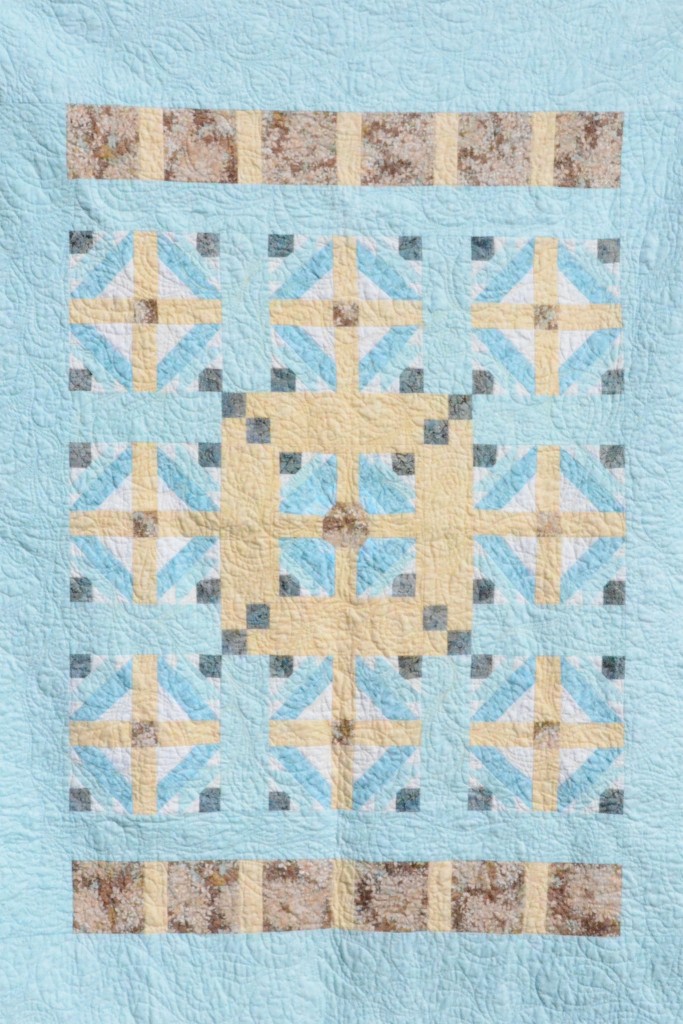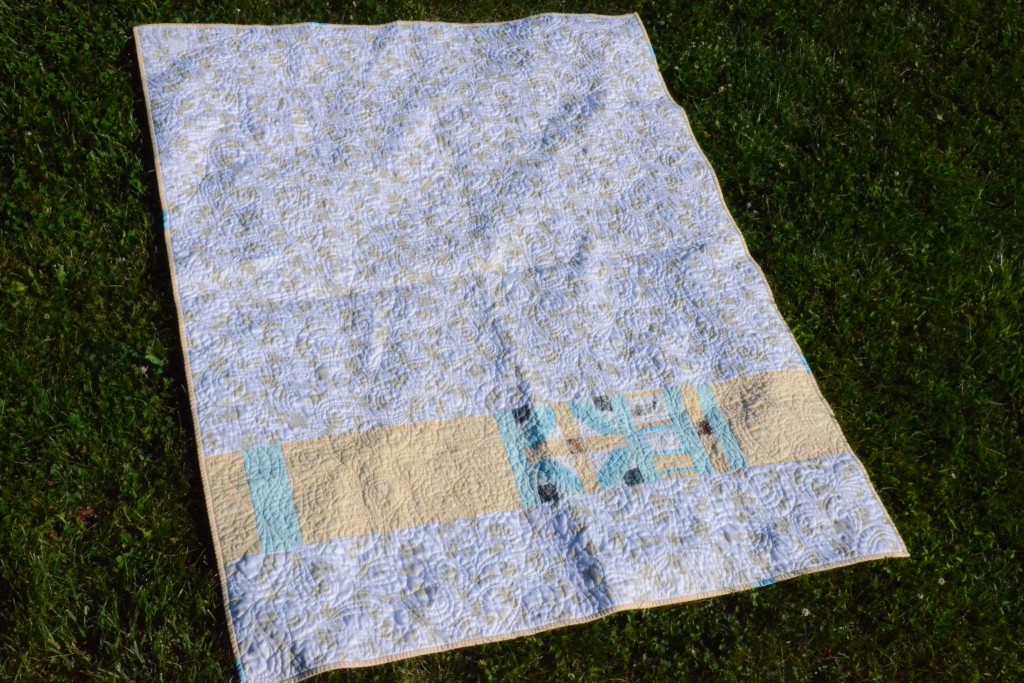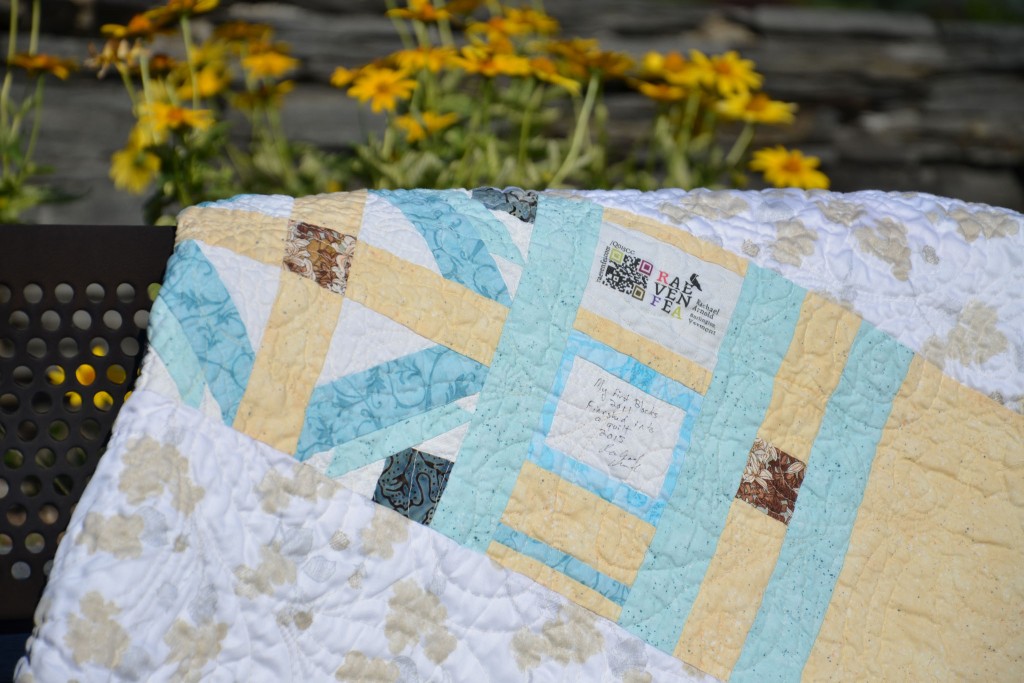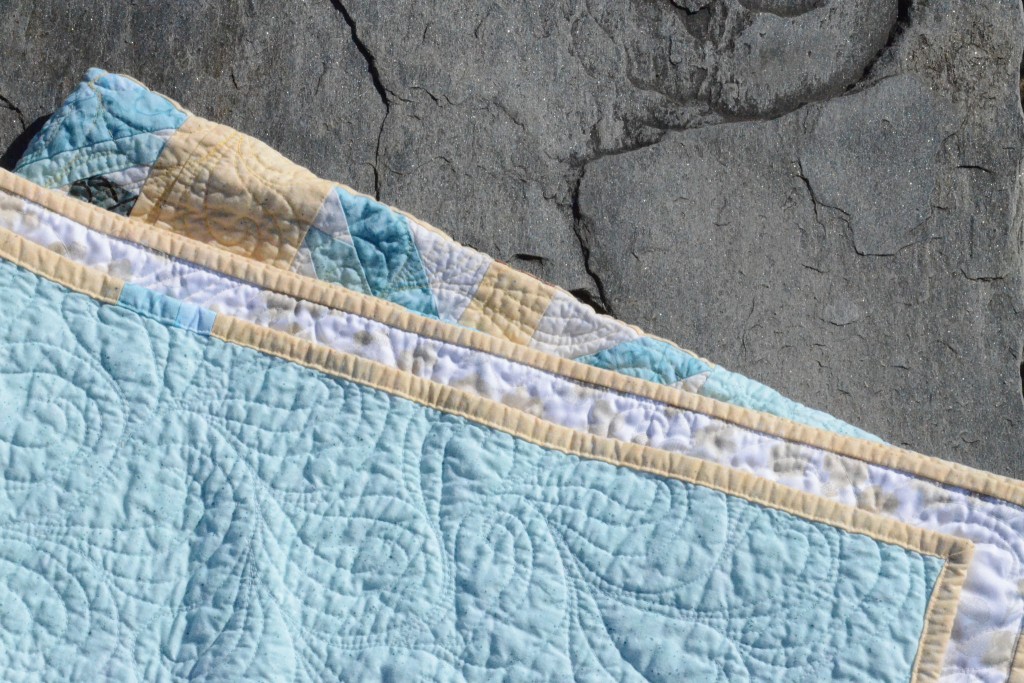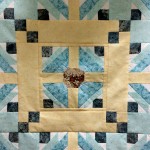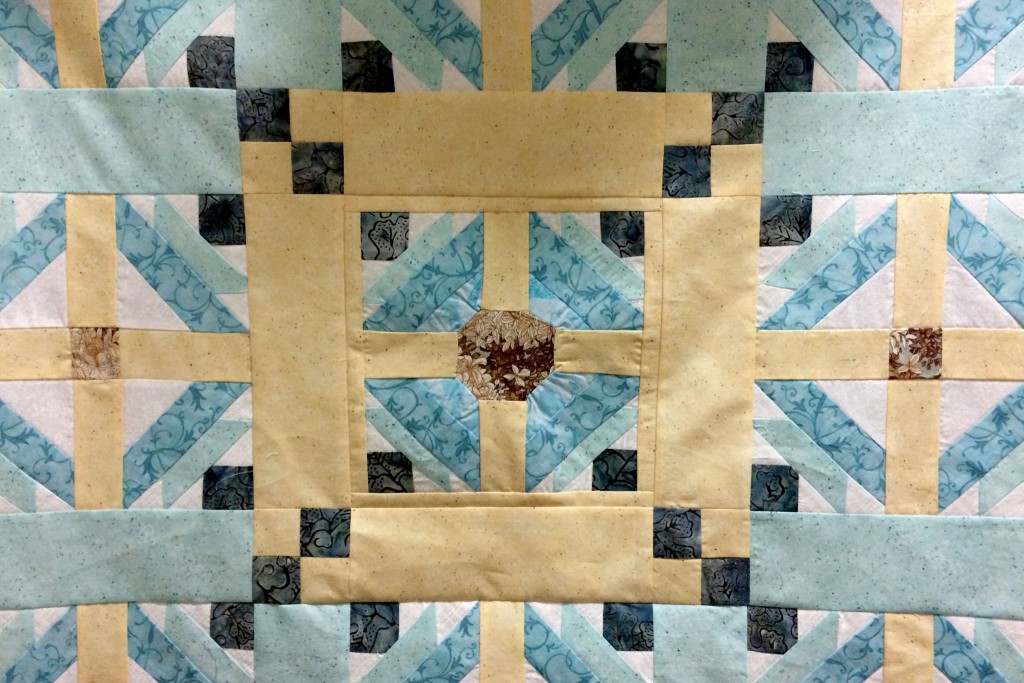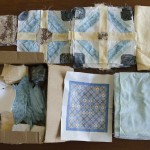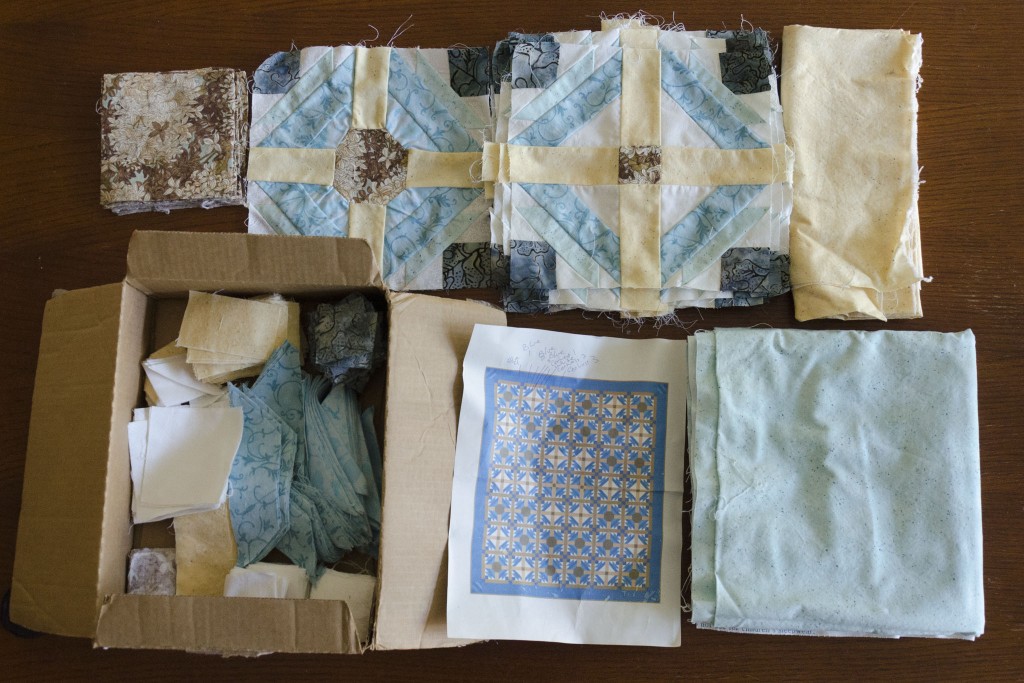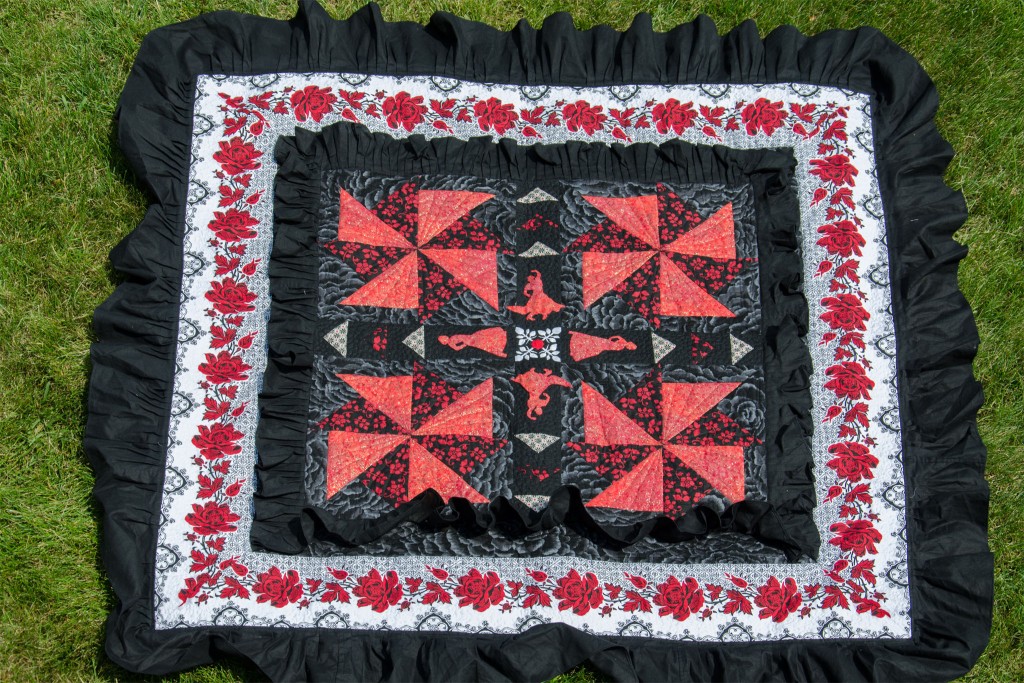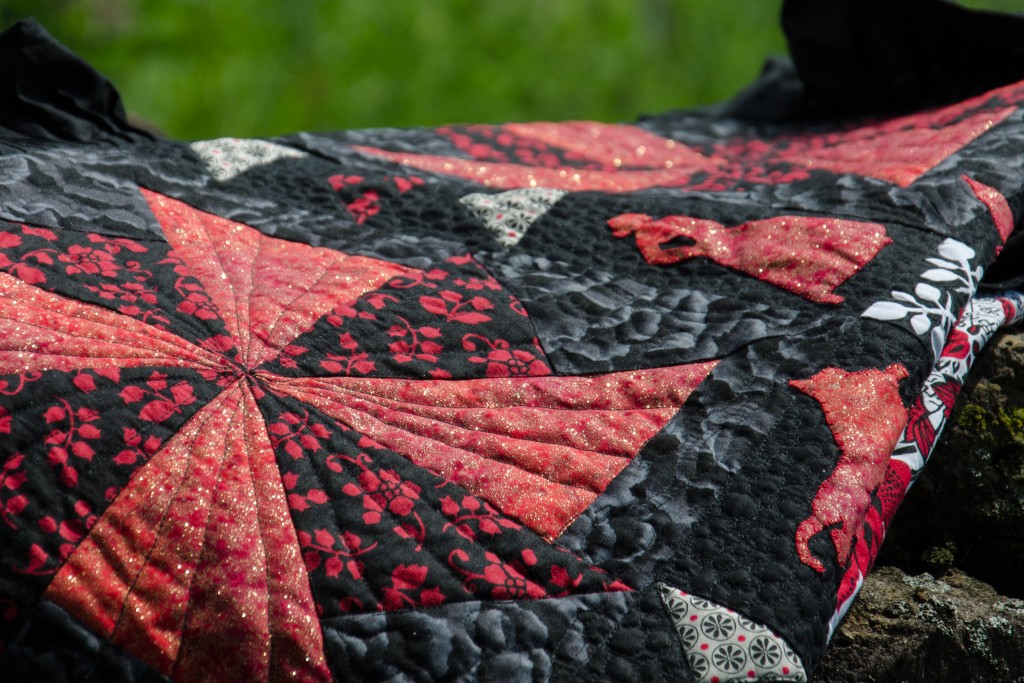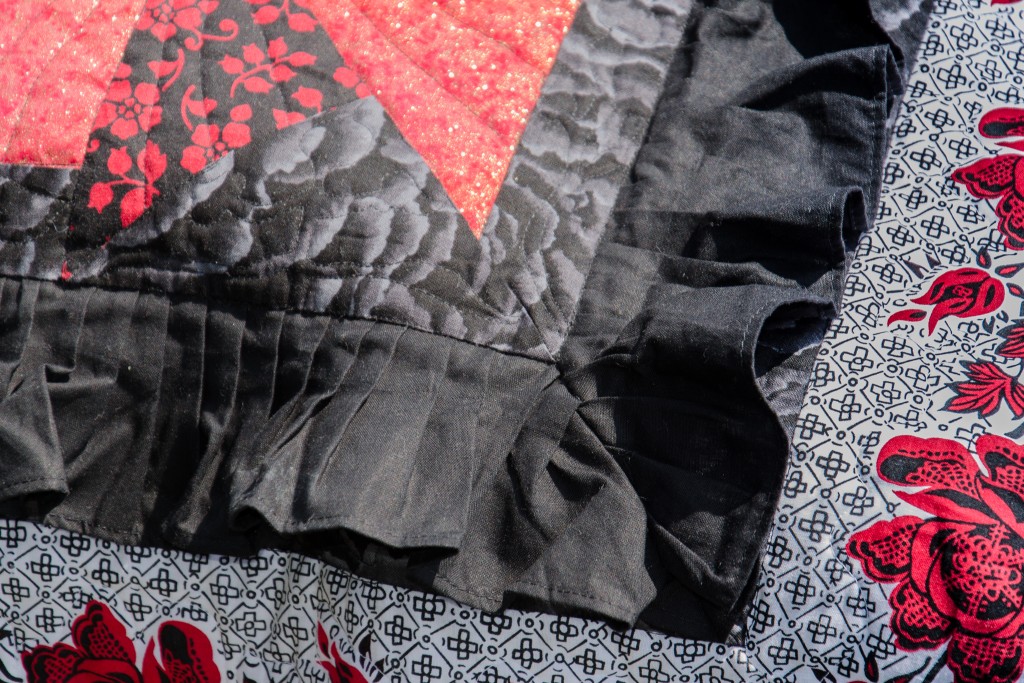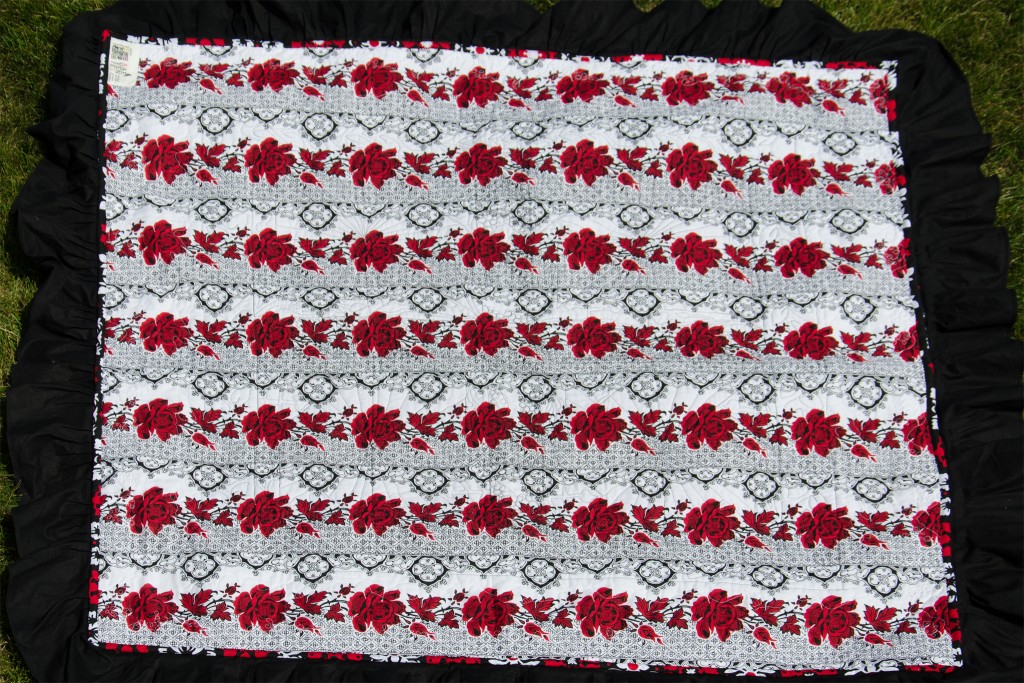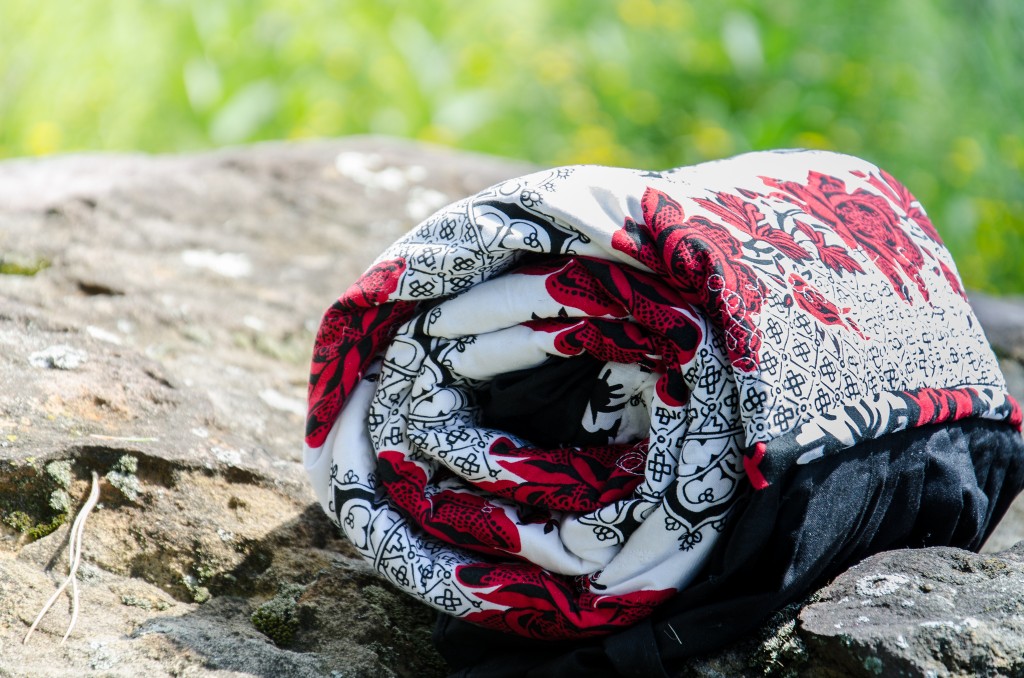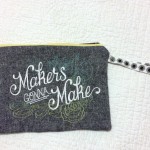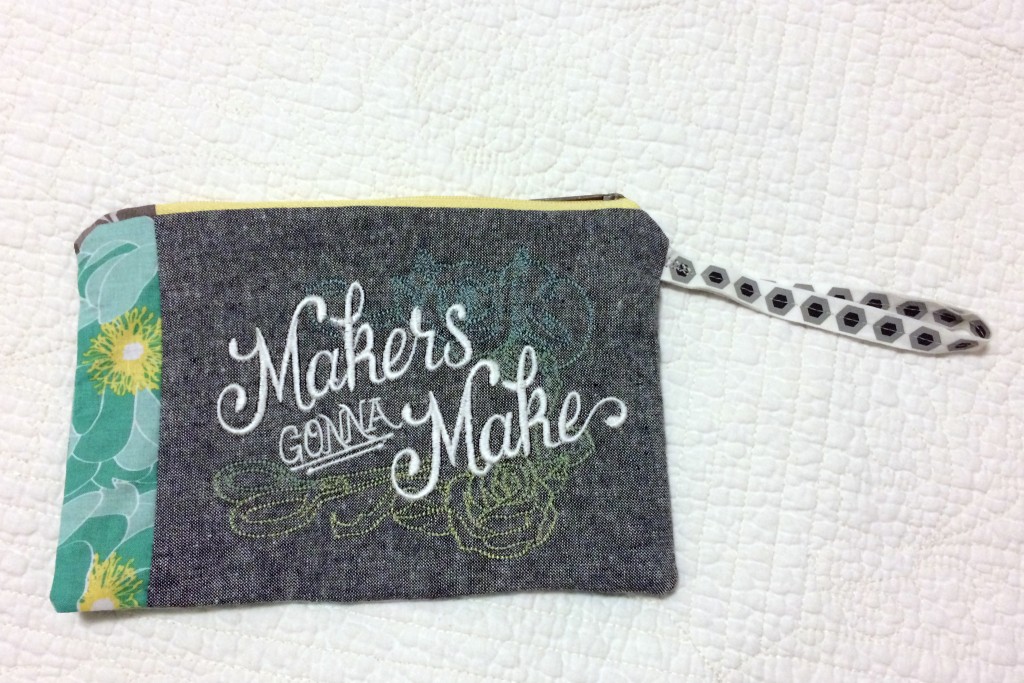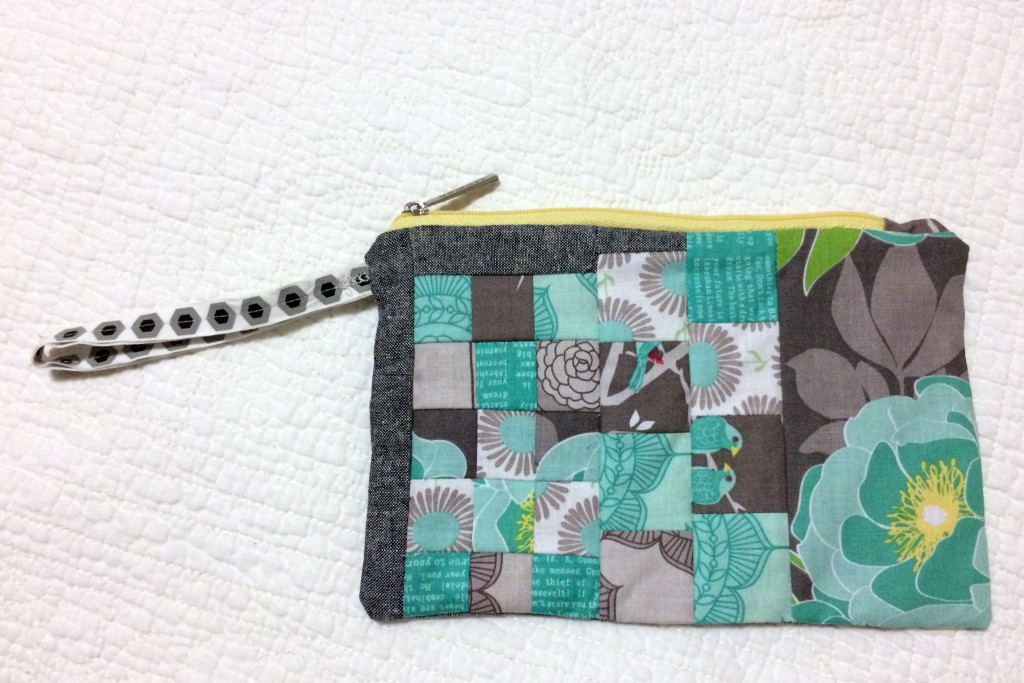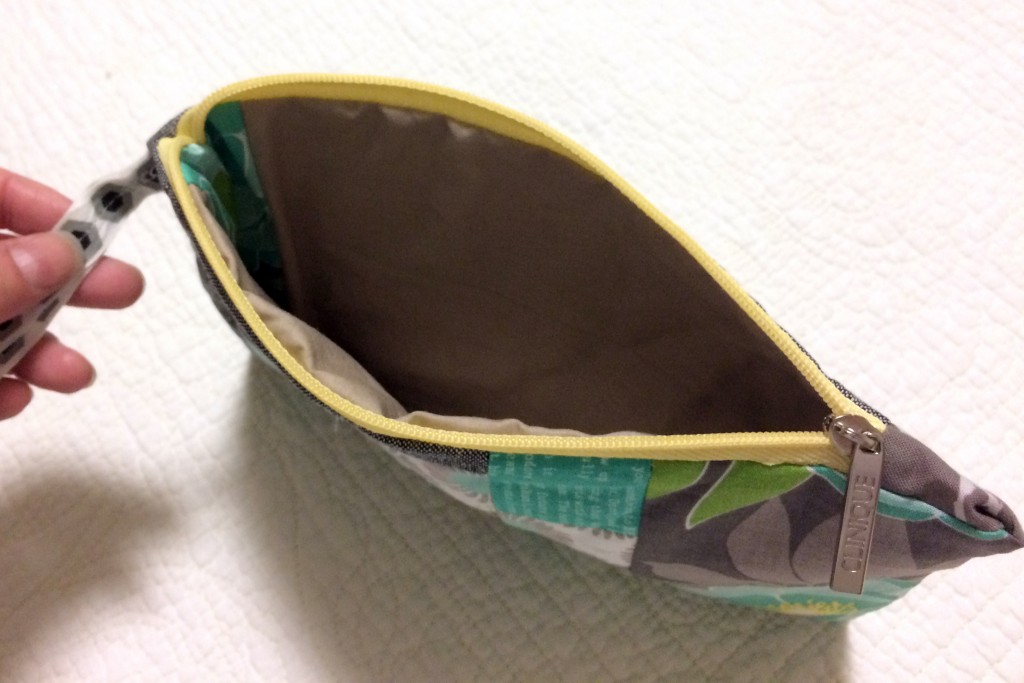Process: Quilting the F-word
I had a very hard time figuring out how to quilt my F-word quilt. The final quilt looks a lot like my original sketches, but I made and then scrapped many other plans in between. A persistent idea with the quilt was obfuscation—hiding or obscuring the fact that someone is a feminist, whether because they have their own hangups with the word or because they don’t want to deal with societal baggage of calling themselves a feminist.
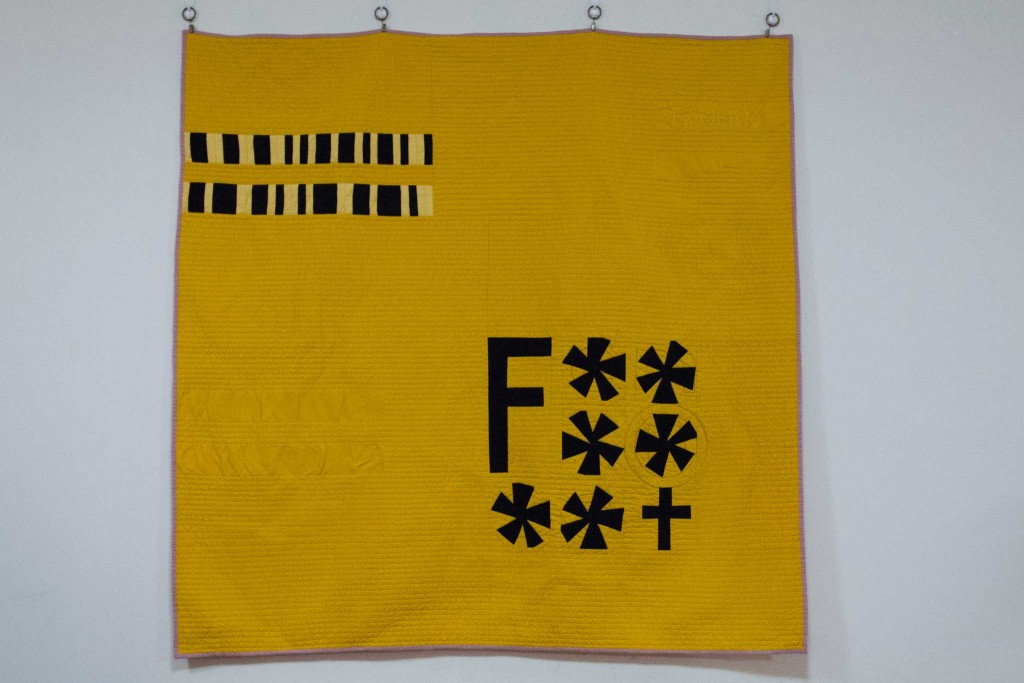
In that vein, iterations of the quilt plan involved quilting in “feminist” in binary, riffing on the equal sign pieced section (there, yellow is 0, black is 1), but couldn’t work the quilting in a way that seemed right. I also liked the aesthetic and suggestive meaning of quilting “feminist” spelled out in braille, but struggled with feeling like that was cultural appropriation. Both methods would clearly spell out the word, yet be illegible to most viewers.
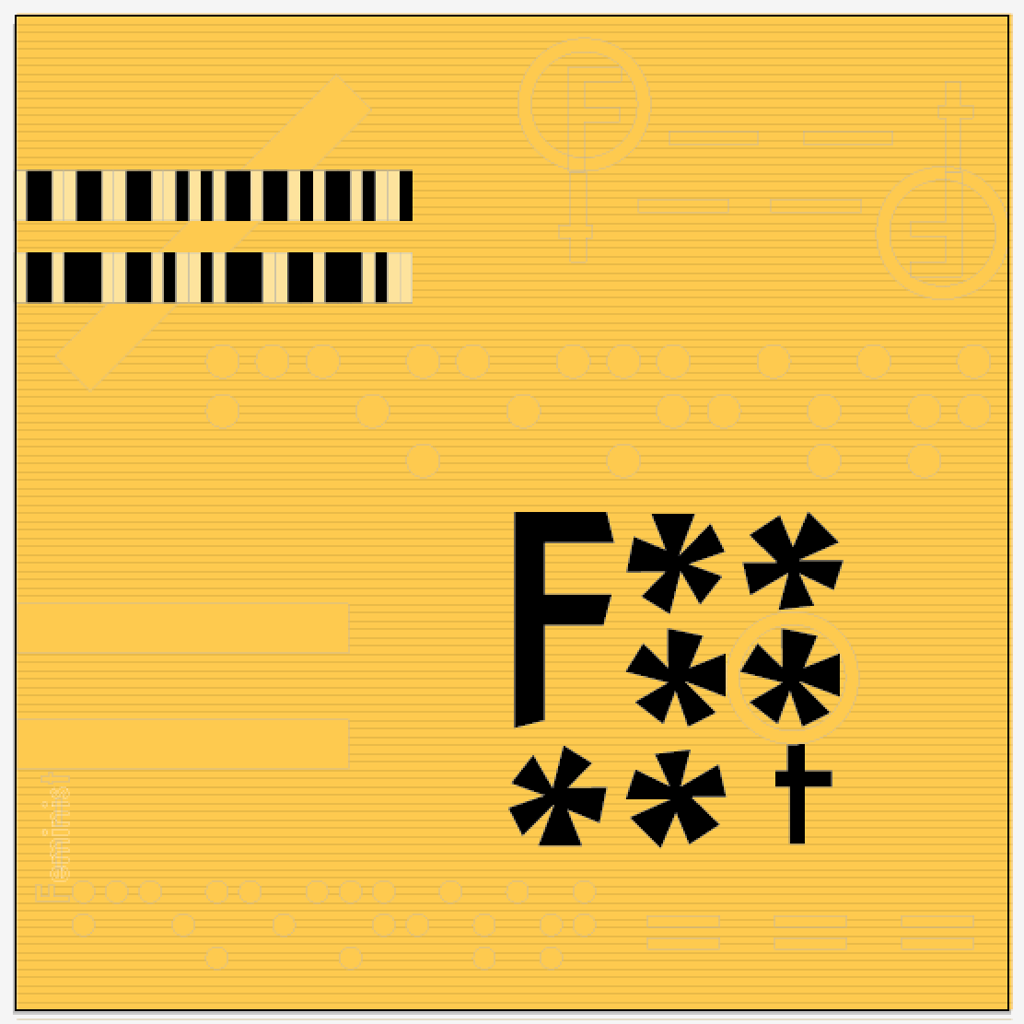
A later plan involved quilting in quotes and definitions. This involved a lot of font-based machine embroidery that was ultimately too technically intricate for my tastes. I was able to create embroidery fonts of text outlines using free software that came with my machine, but the font kerning was horrendous, so I would have had to lay out each individual letter on my machine. I also never fell in love with a layout.
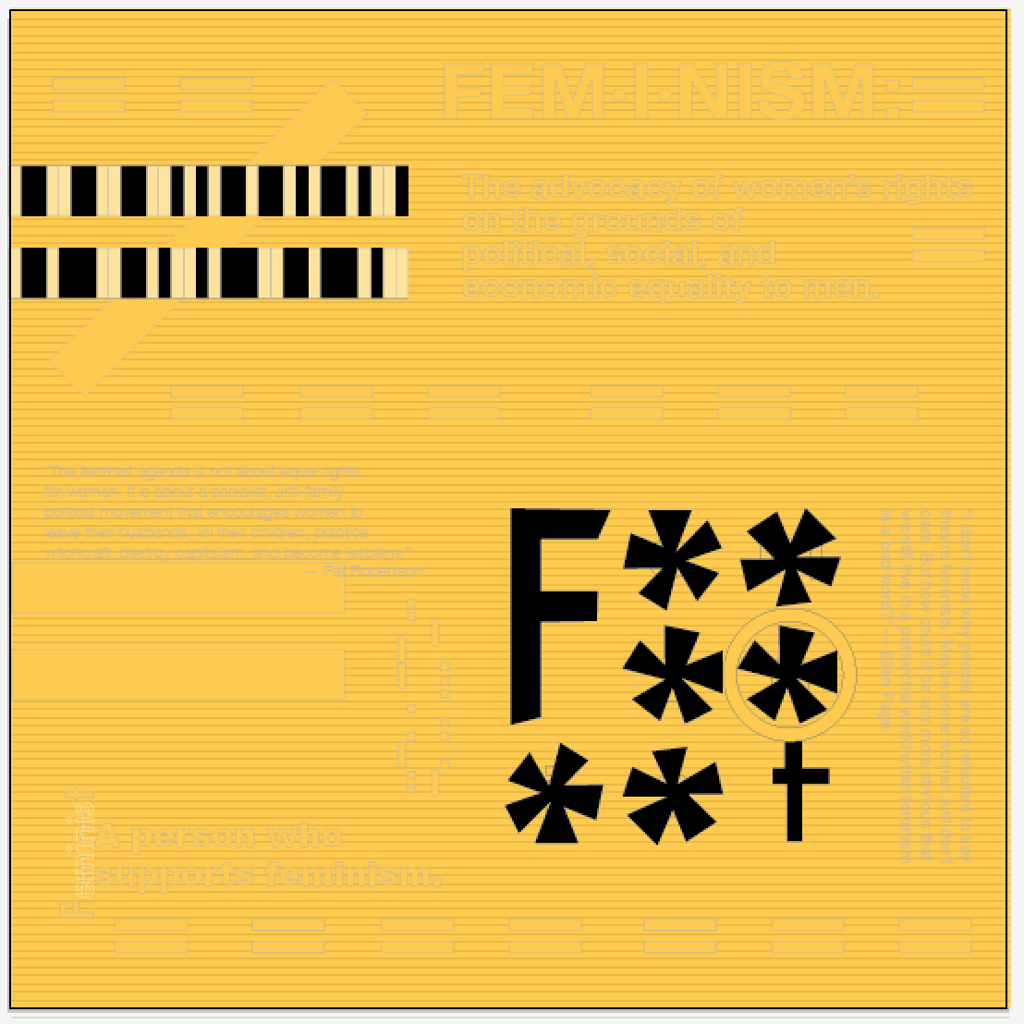
I liked the interplay between anti-feminist quotes from celebritized dogmatists and pro-feminist quotes from celebrities, and sometimes wish I’d been able to work it in.
“The feminist agenda is not about equal rights for women. It is about a socialist, anti-family political movement that encourages women to leave their husbands, kill their children, practice witchcraft, destroy capitalism, and become lesbians.”
“I don’t know why people are so reluctant to say they’re feminists. How could it be any more obvious that we still live in a patriarchal world when feminism is a bad word?”
“The feminist movement is not about success for women. It is about treating women as victims and about telling women that you can’t succeed because society is unfair to you.”
“People feel removed from sexism. ‘I’m not a sexist, but I’m not a feminist.’ They think there’s this fuzzy middle ground. There’s no fuzzy middle ground. You either believe that women are people or you don’t. It’s that simple.”
I scaled back, thinking perhaps I’d use just the definition of feminist and feminism, but it was still too technically finicky in a way that wasn’t speaking to me. Perhaps the story would be different if I had a $3k embroidery software suite.
fem·i·nism
The advocacy of women’s rights on the grounds of political, social, and economic equality to men.
fem·i·nist
A person who supports feminism.
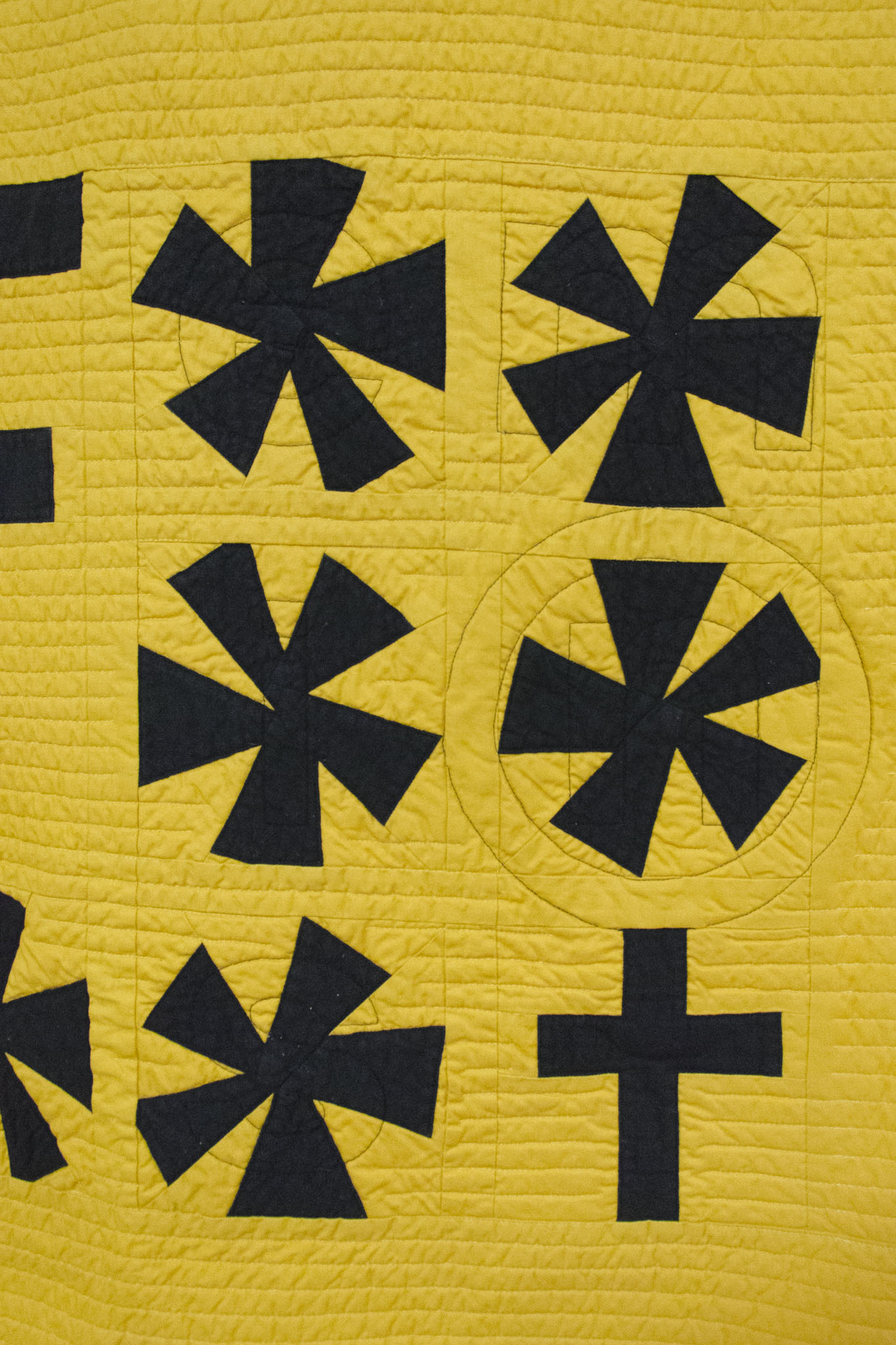
In the end, I used machine embroidery to quilt the letters that are starred-out, and freehanded “F––t” in the partial equality sign in the top right. The remaining quilting is straight lines and single echoes of the pieced shapes, using a lack of quilting to outline a second equality motif for a bit of visual balance. A well-placed black-stitched toroid turns the ‘t’ in “Feminist” into the cross found on the astrological symbol for Venus, widely considered the “female” symbol.
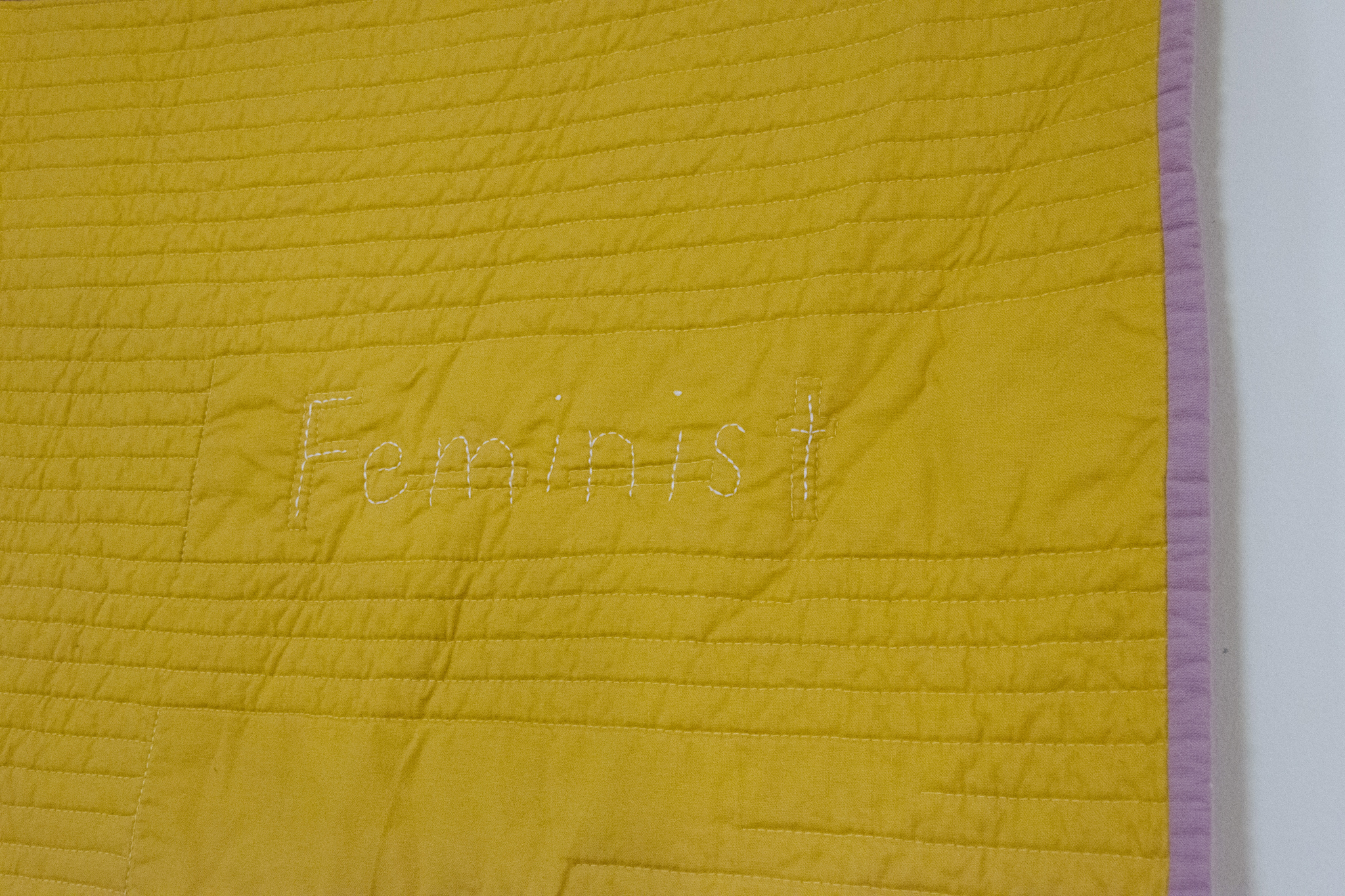
Finally, a hand-quilted “Feminist” overlaps the machined “F––t”, bringing the word to the front of the quilt in a visible, rebellious way—no infanticide or witchcraft needed.
The end result is a quilt whose front is inspired by “Votes for Women” sashes for color, with a nod to technology in the binary piecing, and a visible representation of the censorship that is so rampant when one discusses equal rights for women. The back brings to mind my grandmothers’ decor (complete with my childhood baggage of anti-feminist sentiment), yet has the word feminist clearly displayed.
In case it’s not obvious, yes, quilters can be feminists too.
